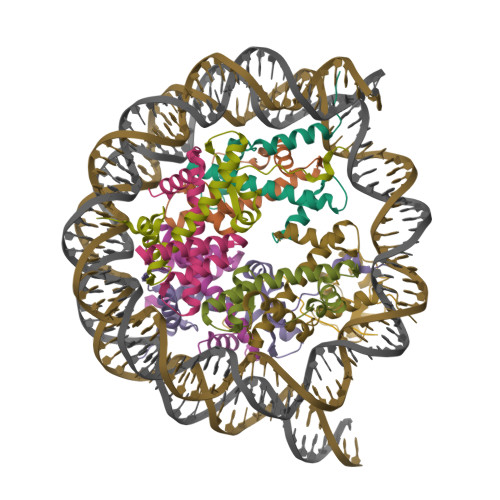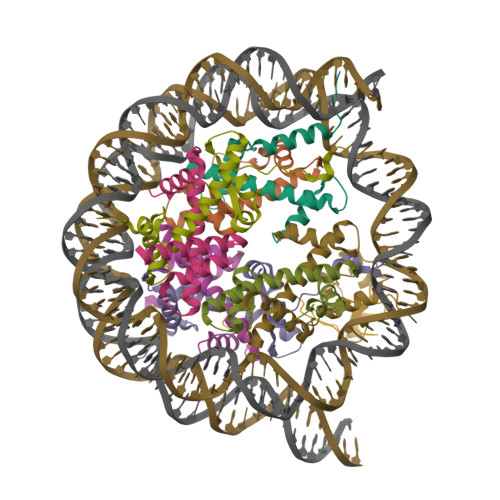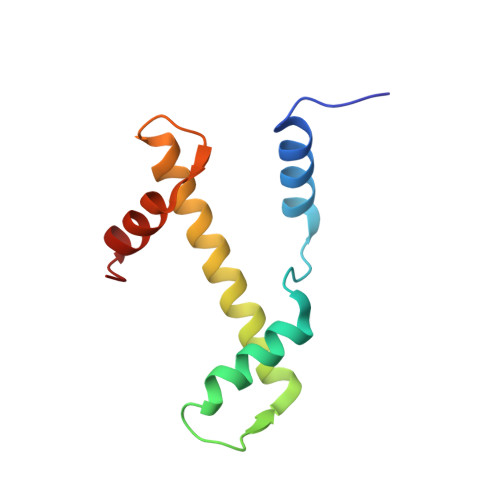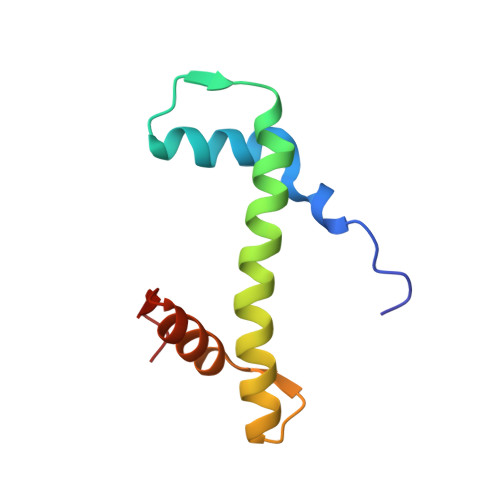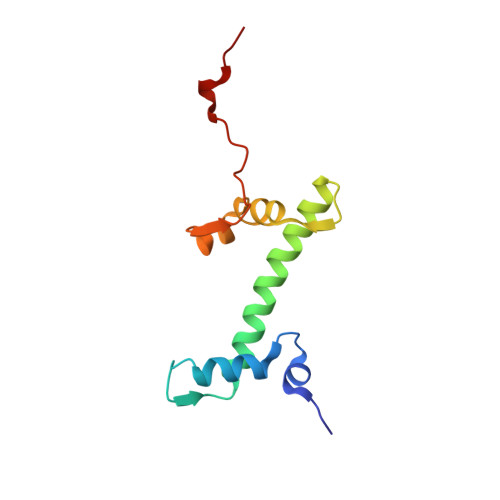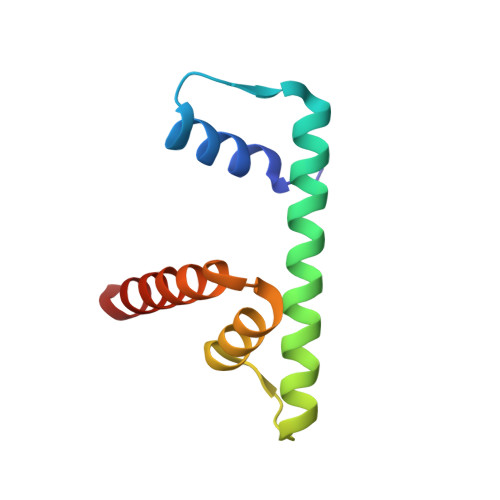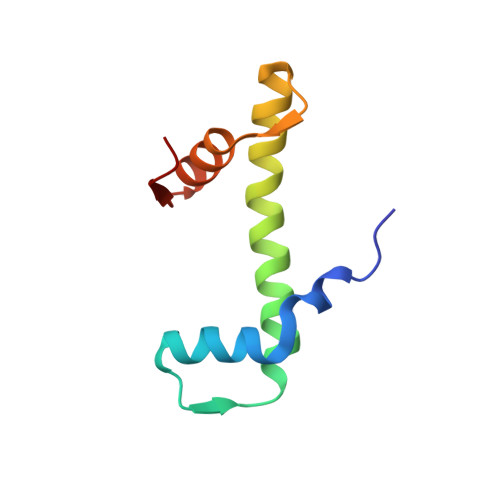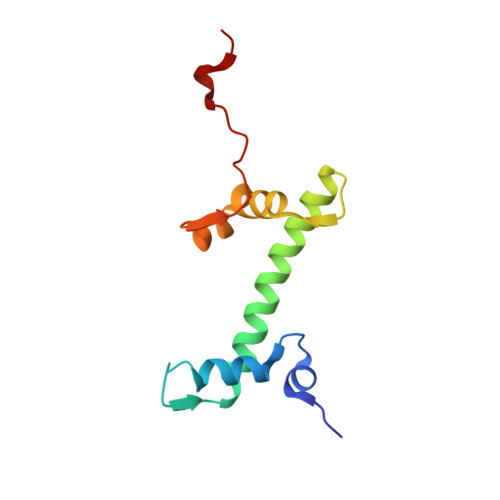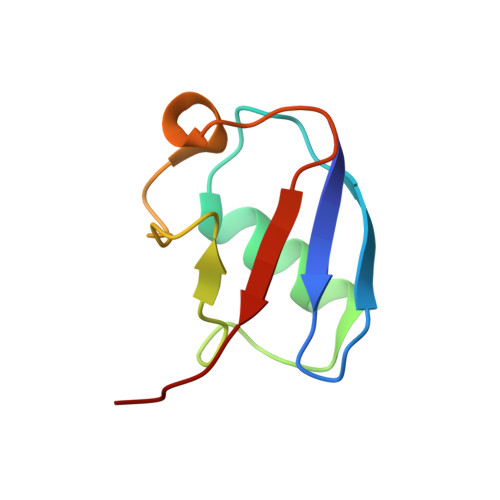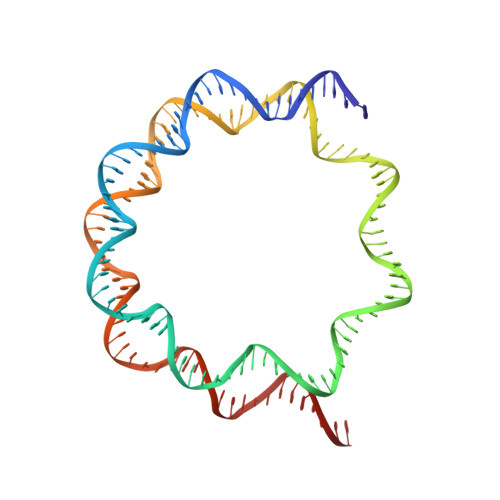Synovial sarcoma X breakpoint 1 protein uses a cryptic groove to selectively recognize H2AK119Ub nucleosomes.
Tong, Z., Ai, H., Xu, Z., He, K., Chu, G.C., Shi, Q., Deng, Z., Xue, Q., Sun, M., Du, Y., Liang, L., Li, J.B., Pan, M., Liu, L.(2024) Nat Struct Mol Biol 31: 300-310
- PubMed: 38177667
- DOI: https://doi.org/10.1038/s41594-023-01141-1
- Primary Citation of Related Structures:
8HQY, 8HR1 - PubMed Abstract:
The cancer-specific fusion oncoprotein SS18-SSX1 disturbs chromatin accessibility by hijacking the BAF complex from the promoters and enhancers to the Polycomb-repressed chromatin regions. This process relies on the selective recognition of H2AK119Ub nucleosomes by synovial sarcoma X breakpoint 1 (SSX1). However, the mechanism underlying the selective recognition of H2AK119Ub nucleosomes by SSX1 in the absence of ubiquitin (Ub)-binding capacity remains unknown. Here we report the cryo-EM structure of SSX1 bound to H2AK119Ub nucleosomes at 3.1-Å resolution. Combined in vitro biochemical and cellular assays revealed that the Ub recognition by SSX1 is unique and depends on a cryptic basic groove formed by H3 and the Ub motif on the H2AK119 site. Moreover, this unorthodox binding mode of SSX1 induces DNA unwrapping at the entry/exit sites. Together, our results describe a unique mode of site-specific ubiquitinated nucleosome recognition that underlies the specific hijacking of the BAF complex to Polycomb regions by SS18-SSX1 in synovial sarcoma.
Organizational Affiliation:
Tsinghua-Peking Center for Life Sciences, Ministry of Education Key Laboratory of Bioorganic Phosphorus Chemistry and Chemical Biology, Center for Synthetic and Systems Biology, Department of Chemistry, Tsinghua University, Beijing, China.








